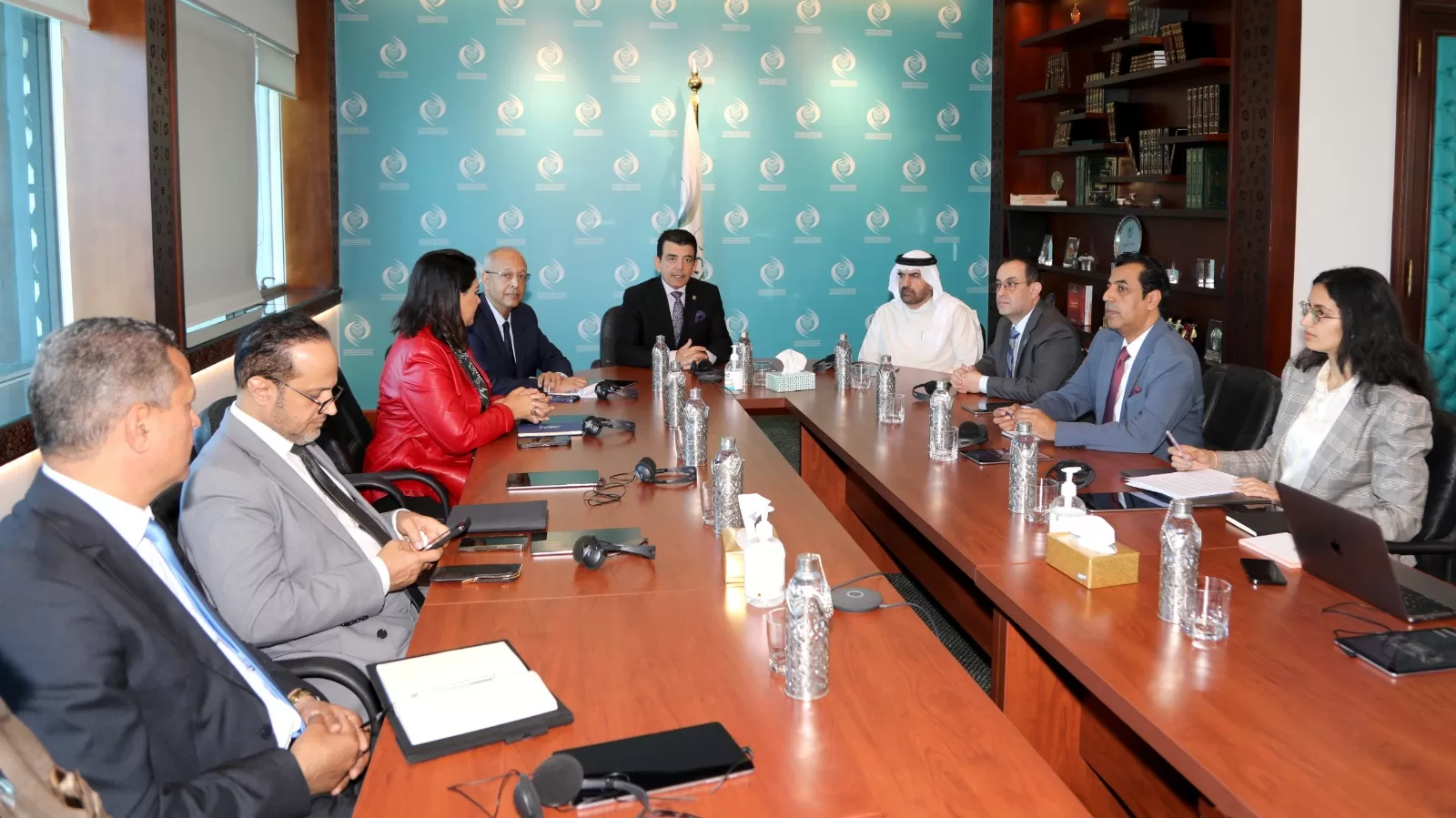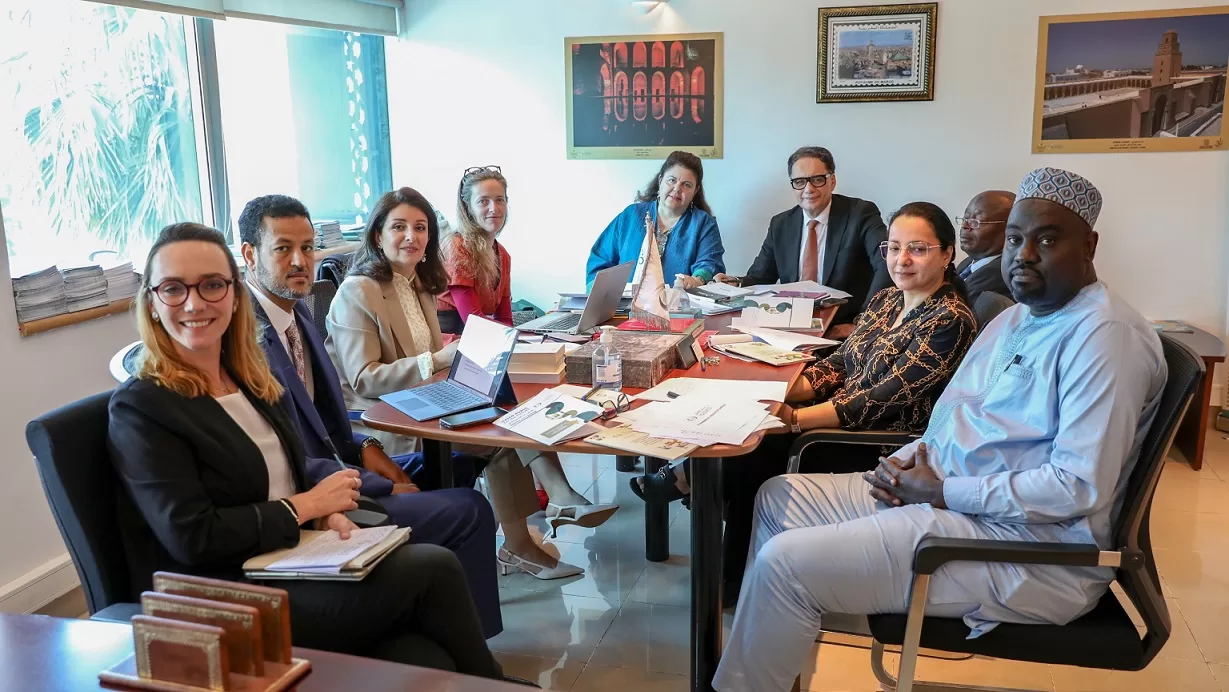
Final Report of IWHC Meeting released

4 December 2019
During the Extraordinary Meeting of the Islamic World Heritage Committee (IWHC), held at ISESCO headquarters in Rabat, participants engaged in deep discussions on cultural heritage in Islamic countries, its preservation, conservation and restoration of its damaged elements. To this effect, the IWHC issued important decisions, namely the inscription of 120 historic sites on the Islamic World Heritage List (IWHL), including three sites on the List of Heritage in Danger.
Key among the decisions is also the creation of the Exclusive List of Sacred Islamic Sites in the Islamic World, covering Al-Kaa’bah Al-Musharafa, Al-Masjid Al-Haram in Makkah Al-Mukarramah, Al-Masjid an-Nabawi in Al-Madinah Al-Munawarah and Al-Aqsa Mosque in Al-Quds Al-Sharif.

This is the full text of the Final Report of the Meeting:
Extraordinary Meeting of the Islamic World Heritage Committee (IWHC)
ISESCO headquarters, Rabat, Kingdom of Morocco
02-03 December 2019
Final Report
As part of the efforts exerted by the Islamic Educational, Scientific and Cultural Organization (ISESCO) to preserve Islamic civilizational heritage in the Islamic world, in a bid to promote efforts aiming at safeguarding and documenting elements of tangible heritage in Member States, and within the framework of implementing the Organization’s new relevant vision, ISESCO held an extraordinary meeting of the Islamic World Heritage Committee (IWHC), at its permanent headquarters in Rabat, Kingdom of Morocco, on 02-03 December 2019. The meeting saw the participation of the following Member States’ representatives in the Committee: State of Kuwait, Republic of Iraq, Islamic Republic of Mauritania, Islamic Republic of Pakistan, Republic of Cameroon, Republic of Cote d’Ivoire, Federal Republic of Nigeria, in addition to the representatives of the Scientific Commission in the Committee (from the Kingdom of Morocco), while the representatives of the Republic of Indonesia and the Republic of Uzbekistan were not able to attend.
During the opening session, Mr. Najib Rhiati, Director of Culture at ISESCO, gave an address wherein he first welcomed the Committee’s members, thanked them for attending the meeting, and conveyed the greetings of H.E. Dr. Salim M. AlMalik, ISESCO Director General and his best wishes for the success of this meeting. Mr. Rhiati also underlined the key role the IWHC plays in safeguarding the historic, civilizational and natural landmarks in the Islamic world, while highlighting the new vision followed and challenges addressed by the Organization in this field.
Then, Dr. Waleed Alsaif, the Committee Chair, extended his thanks to ISESCO and to the Committee’s General Secretariat for holding this extraordinary meeting in the best conditions, and commended the Organization’s keenness to inscribe one hundred (100) new heritage site on the “Islamic World Heritage List”.
Moreover, the Committee listened to the presentation by Dr. Ezzedin Al-Asbahi, Ambassador of the Republic of Yemen, the Meeting’s guest of honor, on “Heritage and Reserves in the Republic of Yemen: Reality and Challenges”. In his presentation, Mr. Al-Asbahi talked about the situation of tangible heritage and natural reserves in Yemen and the destruction, vandalization and pillage to which is subject since many years. He also commended ISESCO’s efforts to save and preserve this heritage and called on the IWHC to take all the necessary measures to protect cultural heritage in the Republic of Yemen.
H.E. Dr. Salim M. AlMalik, ISESCO Director General, attended the first working session and stressed, in his address to the participants, the importance of boosting the IWHC’s action and exerting further efforts to preserve the Islamic world’s heritage in Member States.
The meeting, held over the course of two days, examined the items listed on its agenda. Among these items, there is the issue of industrial heritage which was the topic explored by Mr. Abdulrahman Al-Hussein, Head of the Industrial Heritage Program in the Kingdom of Saudi Arabia, in a presentation on the experience of Saudi Arabia in the field, while reaffirming the importance of inscribing such sites on the IWHL.
After deliberations, the Committee adopted the following:
- Setting up an exclusive list for sacred sites in the Islamic world, covering Al-Kaa’bah Al-Musharafa, Al-Masjid Al-Haram in Makkah Al-Mukarramah, Al-Masjid an-Nabawi in Al-Madinah Al-Munawarah and Al-Aqsa Mosque in Al-Quds Al-Sharif.
- Inscribing 43 new heritage sites on the Final Islamic World Heritage List (IWHL), and urging competent parties to submit more nomination files to inscribe their sites on this list during the Committee’s 9th Meeting to be held in the first quarter of 2020;
- Inscribing 59 new heritage sites on the Tentative List of the Islamic World Heritage, and urging the competent parties in the countries concerned to provide ISESCO with technical files and fill in the relevant inscription form;
- Creating a list for cultural and natural heritage in danger in the Islamic world;
- Inscribing 3 sites in the Republic of Yemen as a cultural and natural heritage in danger and calling for joined efforts to place back these sites on the Final List of World Heritage List.
- Adopting the form of the inscription of the elements of intangible heritage on the IWHL and called on ISESCO General Directorate to communicate the list to all Member States and urged it to prepare relevant inscription files;
- Adopting the proposal of “Islamic World Museums Week” in coincidence with 25 September of every year (Islamic World Heritage Day) which marks the birthday of the OIC; and calling on competent parties to give an exhaustive list of Islamic arts museums, public or private, in their respective countries and provide ISESCO with relevant information.
- Welcoming the proposal of the Ministry of Culture and Handicrafts Industries in the Islamic Republic of Mauritania to inscribe the Mahdara (traditional Quranic school) on the IWHL, and invited ISESCO General Directorate to coordinate efforts with the relevant competent parties.
Likewise, the Committee called on ISESCO General Directorate to:
- Dispatch experts to the competent parties in the Republic of Yemen to assist them in rehabilitating endangered heritage and natural reserves and inscribing more Yemeni historic landmarks on the IWHL;
- Gear a number of executive programmes for the benefit of Member States in order to inscribe industrial heritage sites on the World Heritage List and Islamic World Heritage List;
- Hold intensive training sessions for Member States’ staff to enable them to prepare nomination files for heritage sites and elements of intangible heritage for inscription on the IWHL;
- Hold an expert meeting to revise and define the criteria of inscription on the IWHL;
- Urge competent parties in Member States to prepare exclusive lists of elements of tangible and intangible cultural heritage, and provide the necessary data thereon to be uploaded on the “Web Portal for Historic and Archeological Sites and Landmarks in the Islamic World”, established by ISESCO to showcase Member States’ abundance of historic and archeological sites and landmarks that bear human and civilizational significance; and set up a bibliographic, digital and interactive database for the various elements of the architectural and urban heritage in the Islamic world;
- Coordinate with Member States’ competent parties to oversee the joint inscription on the IWHL of a number of model historic and civilizational routes (routes of Hajj, trade, scholars; students, manuscripts, etc.) and bolster the role of the Assisting Scientific Committee of the IWHC to give suggestions thereon.
At the end of the Meeting, the Committee extended its heartfelt thanks to Dr. Salim M. AlMalik, ISESCO Director General, his sustained efforts to boost the programmes of the Organization relevant to the protection of cultural and natural heritage in the Islamic world; training of specialized staff and the inscription of heritage sites and elements of cultural heritage on the IWHL according to a new vision; and his keenness to improve the IWHC’s performance and action, and maintain the periodicity of its meetings.




